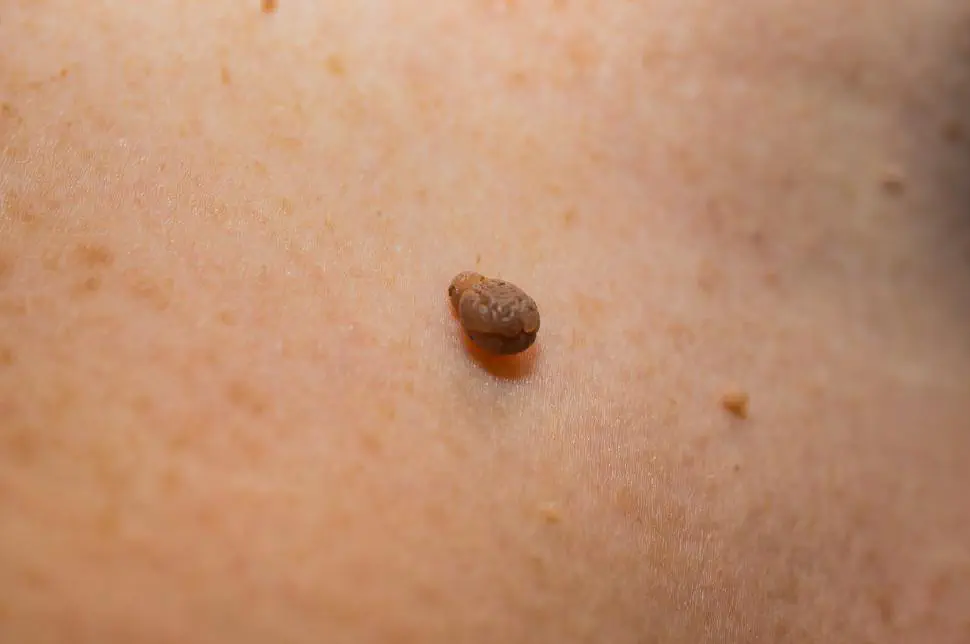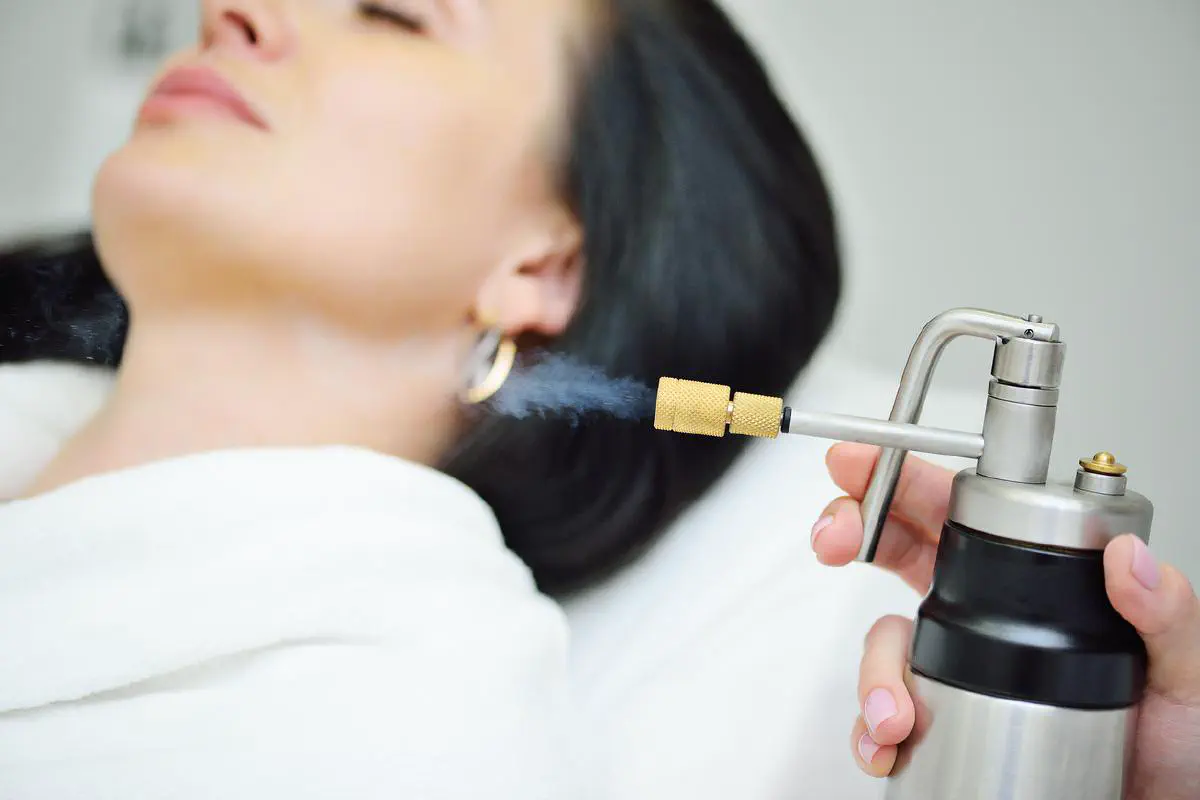Skin tags, though typically harmless, can be a nuisance or cause embarrassment for many. These small benign growths often appear in areas prone to friction such as the neck, armpit, and groin. Understanding their nature and causes can empower you to effectively manage or remove them without unnecessary stress.
Various home remedies and over-the-counter solutions exist, from tea tree oil to removal creams. Knowing the effectiveness and proper application of these methods can save you time and possibly money. However, for persistent skin tags, professional interventions like excision or laser removal may be necessary for optimal results.
This article provides a comprehensive guide on how to remove skin tags step by step. We delve into prevention tips, aftercare practices, and when to seek medical advice, ensuring that you are well-informed for effective skin tag management.
Understanding Skin Tags
Skin tags, also known as acrochordons or fibroepithelial polyps, are benign skin growths. They appear as small, soft pieces of skin that often hang from a narrow stalk. Skin tags commonly develop in areas where skin rubs against skin or clothing, such as the neck, eyelids, and under the breasts. Although they vary in size, skin tags typically pose no health risk and do not require removal unless they cause discomfort or cosmetic concerns. Various over-the-counter treatments and medical procedures are available for those opting to remove them.
What are skin tags?
Skin tags are small, non-cancerous pieces of skin that often hang on a peduncle or stalk. These benign growths commonly form in areas prone to friction, such as the neck, armpits, and body folds. Although skin tags are harmless, they can occasionally snag on clothing or jewelry, causing irritation or bleeding. The size of skin tags can range from very small (about 2mm) to larger growths (up to 5cm), and they may appear singly or in clusters.
Common causes and risk factors
Skin tags often develop due to skin friction, which is why they appear in areas where skin rubs against skin or clothing. Obesity is a well-known risk factor, likely due to increased skin folds creating more friction. Individuals with type 2 diabetes may also experience more skin tags due to severe insulin resistance. Hormonal fluctuations during pregnancy can also promote the development of skin tags. Additionally, they are more common in individuals over the age of 50, highlighting age as a contributing factor in their development.
Home Remedies for Skin Tag Removal
Skin tags are benign skin growths, often found in areas with skin folds. While many seek medical procedures for removal, some opt for home remedies for cosmetic reasons. Common home remedies include tea tree oil, apple cider vinegar, and over-the-counter freezing kits. However, effectiveness varies, and improper use can lead to skin irritation or infection. Notably, the FDA has warned against using some over-the-counter products for skin tag removal. It’s crucial to approach these methods cautiously and understand that results are not immediate, often requiring several days of consistent application.
Using tea tree oil
Tea tree oil is an essential oil with antifungal and antiviral properties, used by some to treat skin growths like skin tags. For removal, apply diluted tea tree oil to a cotton ball, place it on the skin tag, and secure it with a bandage for 10 minutes, three times daily. Patience is key, as this method may take several days to weeks for noticeable results. It’s important to note that tea tree oil can cause skin irritation, particularly on sensitive skin, and should never be used near the eyes. Always conduct a patch test before application to check for allergic reactions.
Benefits of apple cider vinegar
Despite limited research on its effectiveness, apple cider vinegar is a popular choice for skin tag removal due to its acidity. The belief is that it might help dissolve the tissues surrounding the tag. To try this method, soak a cotton ball in diluted apple cider vinegar and apply it to the skin tag. Secure with a bandage, but ensure to observe for any skin irritation. Its acidic nature holds the risk of chemical burns, making dilution essential. Monitoring the area for adverse reactions is necessary to prevent potential skin damage.
Applying vitamin E
Applying vitamin E, a well-known antioxidant, directly onto a skin tag may aid in its removal over time. Users report that consistent application can make the tag less noticeable or even cause it to fall off. Massage the liquid vitamin E on the skin tag and surrounding areas daily for best results. This simple routine not only assists with skin tag management but also contributes to healthier skin by fighting free radicals. However, similar to other home remedies, patience is crucial as the process can take several days to yield visible results.
Over-the-Counter Solutions
Removing skin tags at home is becoming more feasible with over-the-counter products designed for easy and effective use. Dr. Scholl’s® Freeze Away® Skin Tag Remover is a leading option, utilizing cryotherapy technology approved by the FDA for home treatments. This product offers a promising solution by freezing the skin tag until it detaches, similar to in-office procedures performed by professionals. However, it’s crucial to proceed with caution, as mishandling these products can result in adverse effects such as infection and scarring. While many of these products are not FDA-regulated, they present an accessible way to tackle benign skin growths if used correctly. Nonetheless, individuals should be vigilant and consider professional consultation for safety and clarification, especially when addressing lots of skin tags.
Utilization of removal creams
Removal creams for skin tags offer another over-the-counter solution, though they may not be suitable for every skin type. These creams can cause irritation and sometimes lead to contact dermatitis if users are unaware of sensitivities. Despite this, they are an effective short-term option for some seeking to counter skin growths. Caution is essential when using these creams as improper application can result in infection or unwanted scarring. It’s also vital to ensure the growth is truly a skin tag before proceeding. If skin tags are persistent or the diagnosis is unclear, seeking advice from a healthcare provider/skin doctor is advisable to explore safer and more effective treatment alternatives.
Effectiveness of freezing kits
Freezing kits (Skin tag removal kit), like Dr. Scholl’s® Freeze Away®, utilize cryotherapy to eliminate skin tags efficiently by applying low temperatures to destroy skin tissue. Effective cryotherapy requires specific temperatures, usually between −13°F and −58°F, but over-the-counter kits may not always reach these extremes. As a result, their effectiveness can vary in comparison to professional treatments. Despite this potential limitation, many users find Dr. Scholl’s® to offer a clinically efficient method for eliminating unwanted skin tags in as little as one treatment. The purpose of these kits is not just temporary relief but the permanent removal of benign lesions, with the expectation that the skin tag will drop off naturally after the cold treatment.
Professional Surgical Interventions
When it comes to removing skin tags, professional surgical interventions offer precise and effective solutions. Dermatologists/skin doctor can perform these procedures in an outpatient setting, using methods such as excision, cryotherapy, and laser treatments. These procedures are often chosen for cosmetic reasons, as skin tags are benign skin growths that seldom cause health concerns. However, surgical interventions can result in mild skin irritation or temporary discomfort. Insurance may not cover the costs of these procedures since they are primarily for cosmetic improvements.
Excision procedure
The excision procedure for removing skin tags involves using a scalpel or surgical scissors to cut the skin tag (skin tag tissue) from the skin folds. This method provides nearly immediate results and is performed in a sterile medical setting to minimize the risk of infection. Before the procedure, the area is anesthetized to ensure minimal pain. In some cases, stitches may be needed depending on the size and location of the skin tag. Excision is particularly effective for larger skin tags and offers a quick and reliable removal option.
Cryotherapy for skin tags
Cryotherapy leverages the power of liquid nitrogen to remove skin tags by freezing them to extreme temperatures, causing them to fall off. This process effectively destroys the unwanted skin growths by damaging the skin cells at subzero temperatures ranging from −13°F to −58°F. Although over-the-counter kits exist, professional cryotherapy conducted by a dermatologist ensures more consistent results and reduces infection risks. Typically, cryotherapy is swift and may only require a single session for successful skin tag removal.
Laser removal
Laser removal uses concentrated laser beams to break down skin tag cells, eventually leading to the tag falling off. This advanced technique usually involves numbing the region to minimize discomfort during the procedure. The laser creates a small wound that heals over time. Laser removal in a clinical setting is recommended to safely manage skin tags with minimal scarring. It’s an efficient option for those seeking a precise and technologically advanced method.
Aftercare Tips Post-Removal
Proper post-removal care of skin tags is essential to prevent complications. Applying an antibiotic ointment to the area reduces the risk of infection. Covering the site with a bandage, akin to tending a small cut, minimizes external irritants. Scars may form but generally fade over time. If you notice pain or unexpected bleeding, seek medical advice. At-home removal methods have higher infection risks, so professional removal is recommended.
Keeping the area clean
Maintaining cleanliness around the removal site is vital to stave off infection. Regular cleaning can lower the chance of excessive bleeding and supports complete healing. Cleanliness also protects nearby skin from unintended harm. Consult with healthcare professionals for detailed advice on keeping the area clean post-procedure. Proper hygiene is a simple step that significantly aids healing.
Signs of infection to watch for
Post-removal, monitoring for signs of infection is crucial. Increased redness at the removal site can be an early indication. Swelling or unexplained pain may suggest an underlying infection. Unexpected bleeding or discharge like pus should prompt immediate medical consultation. Recognizing these warning signs early can prevent more serious complications.
Proper hydration and moisturizing
Though specific details on hydration and moisturizing aren’t provided, general skincare principles apply. Keeping the skin hydrated may aid its recovery and minimize scarring. Gentle moisturizers can help, but consult a healthcare provider for recommendations. Hydration and moisture could play a supportive role in the overall healing process.
Preventing Skin Tags
Preventing skin tags(Future Skin Tags) involves adopting healthy lifestyle habits. These benign skin growths often form in areas where the skin folds or rubs together. While not all skin tags can be prevented, minimizing triggers such as friction can help. A combination of weight management, appropriate clothing choices, and diet can reduce the likelihood of their development.
Lifestyle changes to minimize occurrence
Making simple lifestyle changes can help decrease the occurrence of skin tags. Engaging in regular exercise and maintaining a healthy weight is crucial as obesity is linked to the formation of these fibroepithelial polyps. Skin irritation from tight clothing or accessories can also lead to skin tags; hence, choosing loose-fitting attire can be beneficial. Hormonal changes, especially during pregnancy, can increase skin tag development, so managing these changes is vital.
Keeping skin healthy and unburdened by excessive friction is essential. Clothes and accessories that regularly rub against the skin should be avoided. This can help prevent the irritation and microtrauma that contribute to skin tag formation. Additionally, individuals prone to skin tags should consider lifestyle adjustments in response to transitional periods, like pregnancy, where hormonal shifts are significant.
Role of diet and exercise
Diet and exercise have a significant impact on the skin’s health and the likelihood of skin tag development. Maintaining a balanced diet rich in fruits, vegetables, and whole grains contributes to overall skin health, potentially limiting skin conditions and growths. Metabolic syndrome conditions, such as obesity, directly influence the proliferation of skin tags, making weight management imperative.
Exercise aids in achieving and maintaining a healthy weight, reducing the physical conditions that foster skin tag development. Regular physical activity is particularly important in mitigating the effects of hormonal changes that can cause lots of skin tags. Consistent exercise and prudent dietary choices serve as preventive measures against the formation of additional tags. Managing weight is especially crucial during pregnancy, where weight gain can exacerbate the development of skin tags.
Knowing When to Consult a Doctor
It’s essential to consult a doctor if a skin tag is causing discomfort or if you desire a professional skin tag removal. This decision ensures you receive care in a safe, sterile environment, minimizing the risk of infection. Using an in-office procedure, doctors can effectively handle skin tags, preventing regrowth and ensuring they do not indicate other health conditions like skin cancer.
Identifying Atypical Features
A dermatologist can differentiate skin tags from other conditions through a simple visual exam or telehealth consultation. While most skin tags are benign, those with atypical features might require further investigation. If a skin tag exhibits irregular characteristics—such as unusual size or color changes—a doctor might perform a biopsy. Regularly irritated skin tags, perhaps due to their location, can also seem atypical and justify closer examination to rule out more severe skin growths or skin cancer.
Concerns About Rapid Changes or Pain
Observing rapid changes in a skin tag’s size, color, or number warrants a doctor’s visit. Skin tags that become painful or bleed might be irritated by clothing, jewelry, or seat belts. Such swift transformations could signal a more serious issue, including the potential for skin cancers. Consulting a dermatologist ensures safe removal while maintaining comfort and preventing complications. Addressing discomfort early can significantly reduce irritation and bleeding risks associated with problematic skin tags.








